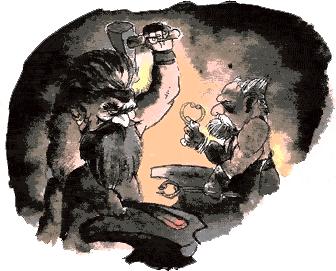Lee Berger has spent his professional life searching for evidence of mankind's past.

He finds no shortage of bone underneath the flowstone including a tooth and a piece of cranium. But what these bones begin to tell Berger has far-reaching implications beyond the dating. The bones that Berger has found has some very unusual characteristics, a reduced chin, large teeth and what might be a small brain-size, leading Berger to reconsider his notion of what humans can look like.











